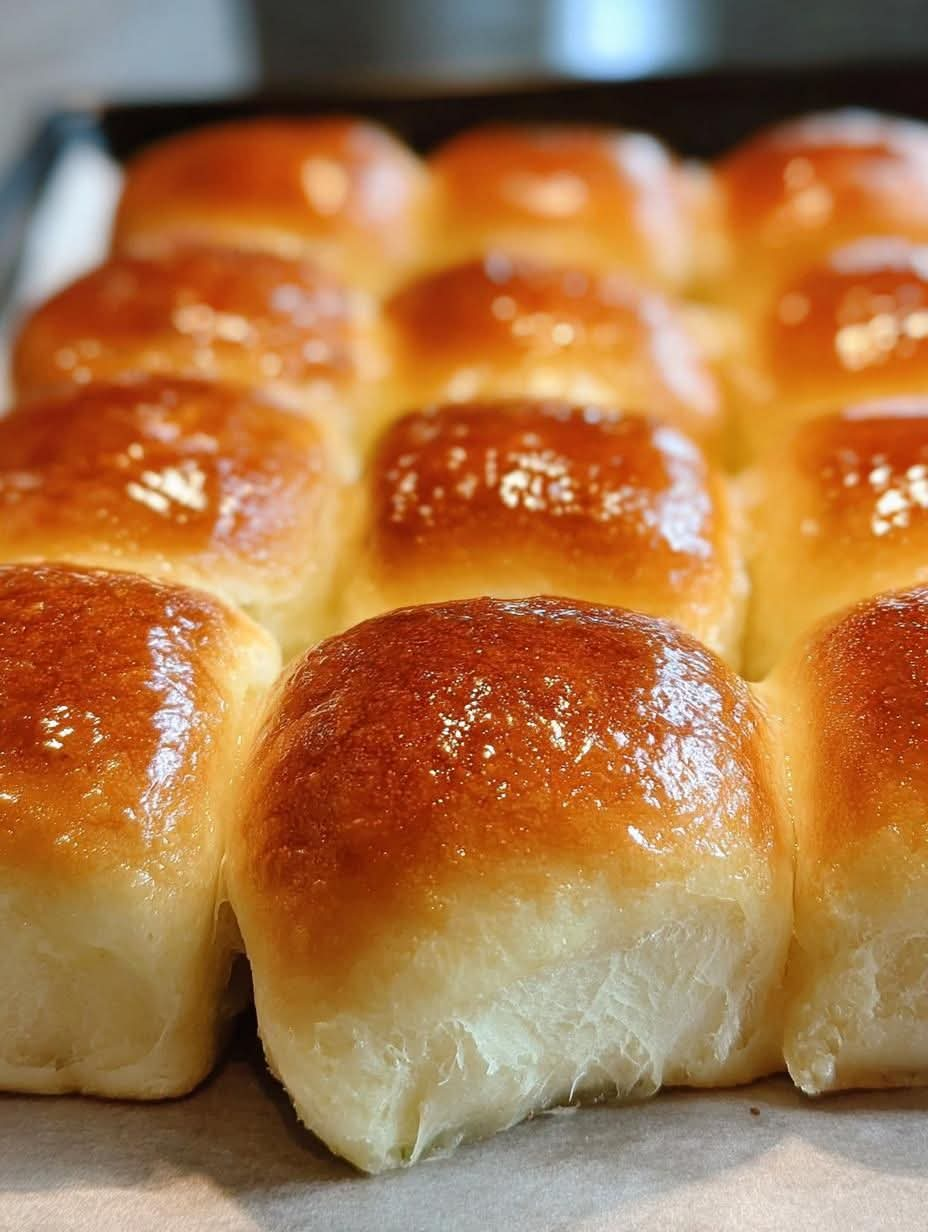Sweet Dinner Rolls
Soft, Fluffy, and Perfectly Golden Every Time
There is something truly comforting about a warm, homemade dinner roll fresh out of the oven. These Sweet Dinner Rolls are soft, buttery, and beautifully tender with a delicate sweetness that makes them irresistible alongside any meal. Whether you serve them for breakfast, brunch, or as the perfect side for a hearty dinner, these rolls rise high, bake evenly, and come out perfectly soft and pillowy every single time.
This recipe uses classic techniques—scalding milk, activating yeast, and double rising—to ensure maximum softness and flavor. If you have never made homemade rolls before, this recipe walks you through each step with clarity and detail, helping you achieve bakery-quality results in your own kitchen.
Why You’ll Love These Sweet Dinner Rolls
- They are incredibly soft and fluffy thanks to a well-balanced enriched dough.
- The slight sweetness makes them perfect for both sweet and savory meals.
- They rise beautifully and bake to a rich golden color.
- You can make them in a stand mixer or by hand.
- They store well and reheat beautifully, making them perfect for meal prep or gatherings.
Ingredients
- ½ cup (125 ml) whole milk
- ¾ cup (150 g) granulated sugar
- 1 teaspoon salt
- 4 tablespoons (56.8 g) unsalted butter, melted
- ½ cup warm water (115°F / 46°C)
- 2 packages active dry yeast
- 2 large eggs, lightly beaten
- About 4 cups (480 g) all-purpose flour
- Additional melted butter for brushing tops
Instructions
1. Scald the Milk
Place the milk in a small, heavy-bottomed saucepan. Heat over medium, stirring continuously, until the milk reaches a gentle boil. The moment it begins to bubble, remove it from the heat and continue stirring for a minute to help it cool slightly. This traditional step improves the softness and structure of the rolls.
2. Activate the Yeast
In a small bowl, combine warm water (115°F), 2 teaspoons sugar taken from the measured amount, and the active dry yeast. Stir briefly and let the mixture rest for 5–10 minutes, or until it becomes foamy and aromatic. This signals that the yeast is fully activated.
3. Combine Wet Ingredients
In the bowl of a stand mixer (or a large mixing bowl if working by hand), add the proofed yeast mixture, the remaining sugar, melted butter, salt, eggs, and the cooled scalded milk. Mix briefly until everything is well combined.
4. Add the Flour
Begin adding the flour in small increments—about ½ cup at a time—mixing between each addition. Continue until you form a soft dough that is smooth, elastic, and slightly tacky. It should pull away from the sides of the bowl but remain soft to the touch.
5. Knead the Dough
Knead for 5–8 minutes using the dough hook attachment or by hand on a lightly floured surface. The dough should become silky, flexible, and easy to shape.
6. First Rise
Transfer the dough to a lightly oiled bowl, turn it once to coat the surface, and cover tightly with a clean towel or plastic wrap. Place the bowl in a warm, draft-free spot and allow the dough to rise until doubled in size, usually about 1 hour.
7. Shape the Rolls
Once the dough has risen, gently punch it down to remove air. Pinch off pieces of dough—about 2 tablespoons each—and roll them into smooth, round balls. Arrange them on a parchment-lined baking sheet or in a lightly greased baking pan, leaving space between them to rise.
8. Second Rise
Cover the shaped rolls again and allow them to rise for another hour. They should become puffy and noticeably larger.
9. Bake
Preheat your oven to 375°F (190°C). Bake the rolls for about 20 minutes, or until the tops are deep golden brown and the rolls spring back lightly when touched.
10. Finish
Remove the rolls from the oven and immediately brush them with melted butter. This adds shine, enhances the flavor, and keeps the tops beautifully soft.
Serve warm and enjoy their delicate sweetness and pillowy texture.
Tips for Success
- Do not rush the rising time. A slow, steady rise results in the fluffiest rolls.
- Scalded milk makes a noticeable difference in tenderness and softness.
- Use fresh yeast. If your yeast doesn’t foam during activation, start again with a new packet.
- For extra-soft rolls, place them close together in a baking dish so they bake into each other, forming pull-apart rolls.
